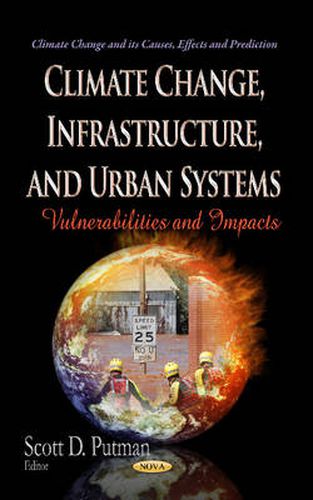Readings Newsletter
Become a Readings Member to make your shopping experience even easier.
Sign in or sign up for free!
You’re not far away from qualifying for FREE standard shipping within Australia
You’ve qualified for FREE standard shipping within Australia
The cart is loading…






This book provides an overview of the technical report issued by the U.S. Department of Energy on climate change and infrastructure, urban systems and vulnerabilities. The book is a summary of the currently existing knowledge based on this topic, nested within a broader framing of issues and questions that need further attention in the longer run. Current knowledge indicates that vulnerability concerns tend to be focused on extreme weather events associated with climate change that can disrupt infrastructure services, often cascading across infrastructures because of extensive interdependencies, threatening health and local economies, especially in areas where human populations and economic activities are concentrated in urban areas. Vulnerabilities are especially large where infrastructures are subject to multiple stresses, beyond climate change alone; when they are located in areas vulnerable to extreme weather events; and if climate change is severe rather than moderate. This book examines promising approaches for risk management, based on emerging lessons from a number of innovative initiatives in U.S. cities and other countries, involving both structural and non-structural options.
$9.00 standard shipping within Australia
FREE standard shipping within Australia for orders over $100.00
Express & International shipping calculated at checkout
This book provides an overview of the technical report issued by the U.S. Department of Energy on climate change and infrastructure, urban systems and vulnerabilities. The book is a summary of the currently existing knowledge based on this topic, nested within a broader framing of issues and questions that need further attention in the longer run. Current knowledge indicates that vulnerability concerns tend to be focused on extreme weather events associated with climate change that can disrupt infrastructure services, often cascading across infrastructures because of extensive interdependencies, threatening health and local economies, especially in areas where human populations and economic activities are concentrated in urban areas. Vulnerabilities are especially large where infrastructures are subject to multiple stresses, beyond climate change alone; when they are located in areas vulnerable to extreme weather events; and if climate change is severe rather than moderate. This book examines promising approaches for risk management, based on emerging lessons from a number of innovative initiatives in U.S. cities and other countries, involving both structural and non-structural options.